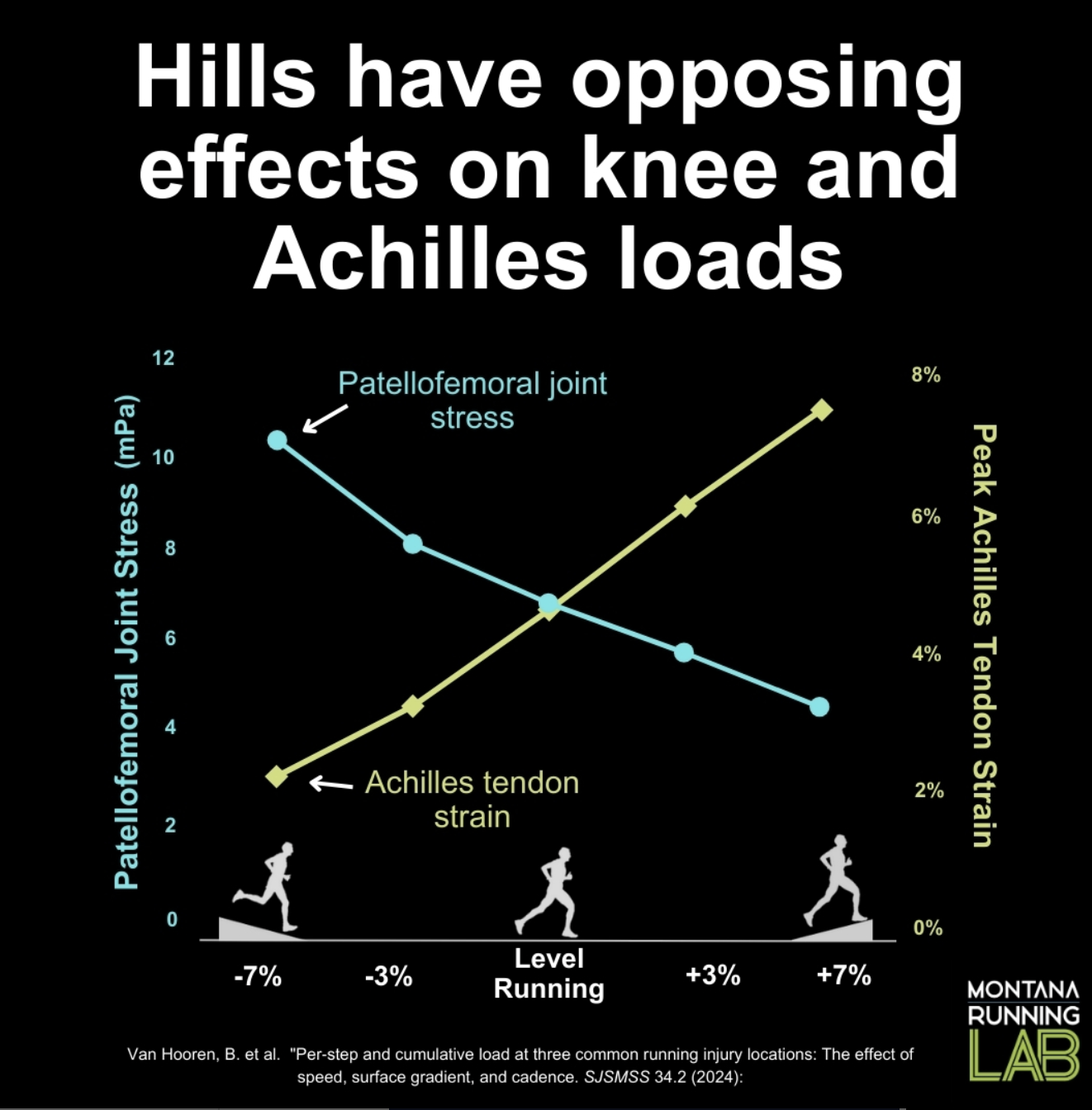Whether you’re conquering uphill climbs or breezing down declines, every step you take has a profound impact on your body. Recent research delves into the intricate relationship between running inclines and declines, shedding light on how they influence the patellofemoral joint and Achilles tendon loads. Let’s lace up our running shoes and explore the science behind these slopes.
Uphill Running: Finding the Sweet Spot
Running uphill is a cardiovascular and muscular challenge, but did you know it significantly alters the stress on your patellofemoral joint and Achilles tendon? Research suggests that at a 3% incline, the patellofemoral joint experiences a stress reduction of 27%, and at a 7% incline, the reduction jumps to an impressive 46% compared to level running. This is fantastic news for those concerned about knee stress during their uphill sprints.
However, the Achilles tendon tells a slightly different story. Uphill running at 3% and 7% grades increases strain by 29% and 55%, respectively. While your knees may thank you for the gentler slope, your Achilles tendon is working harder to carry you up that hill.
The Downhill Dilemma: Balancing Act for Knees and Achilles
As you descend, the dynamics shift once again. Running downhill on a 3% grade appears to be a friend to your Achilles tendon, experiencing a 27% reduction in strain. However, the knees bear the brunt of the descent, with a 43% higher workload compared to level running at a 7% downhill grade.
Why Does It Matter?
Understanding the differential impact of inclines and declines on specific joints is crucial for runners aiming to optimize performance while minimizing the risk of injury. Here’s why this information matters:
- Informed Training Choices:
- Armed with knowledge about the varying effects on the patellofemoral joint and Achilles tendon, runners can tailor their training regimens. This insight allows for targeted exercises and adjustments to mitigate potential stress on vulnerable areas.
- Injury Prevention:
- Knowing the strain each slope places on your body aids in injury prevention. Whether it’s strengthening exercises for the Achilles tendon or additional support for the knees, informed runners can take proactive measures to stay injury-free.
- Performance Enhancement:
- By strategically incorporating inclines and declines into your training, you can enhance specific muscle groups and improve overall running efficiency. Understanding the physiological responses empowers runners to optimize their workouts for better performance.
- Long-Term Joint Health:
- Consideration of joint stress during different running conditions contributes to the longevity of your running journey. Balancing the demands on the knees and Achilles tendon ensures a sustainable and enjoyable running experience.
The terrain you choose for your run matters more than you might think. Uphill and downhill running present unique challenges and benefits, and being aware of how they impact your body allows you to make informed decisions for a healthier, more effective running experience. So, the next time you hit the trail, keep in mind the science beneath your feet and run with knowledge, strength, and longevity in mind.
- Van Hooren, B et al., Scandinavian Journal of Medicine and Science in Sports 34.2 (2024): e14570
- Lead image – @Montannarunninglab
Thanks For Reading
James @physiorun
